Climber’s Hands: How to Care for Them (Complete 2024 Guide)
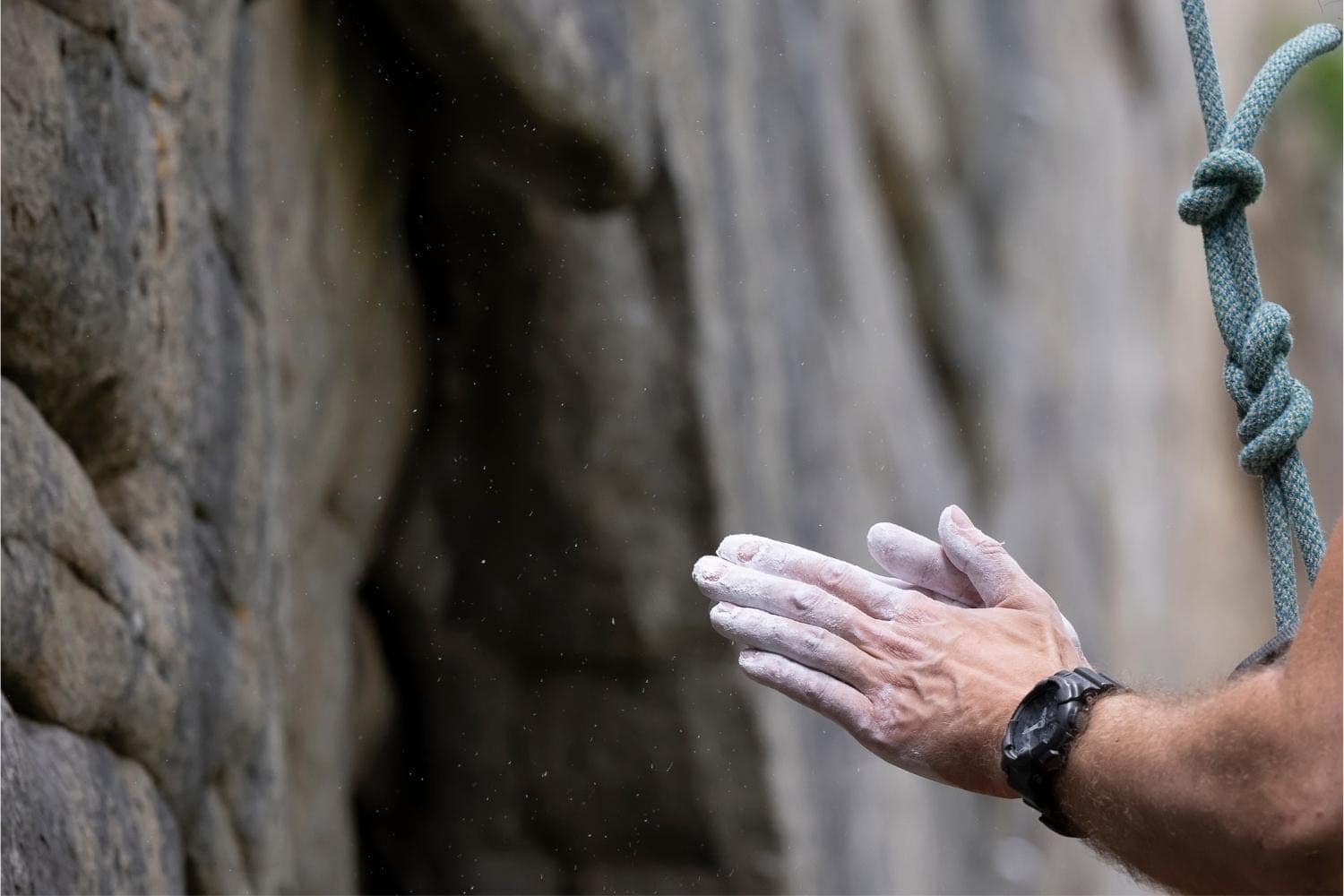
It’s no secret that rock climbers’ hands are their greatest asset. Part of becoming skilled in rock climbing is building thick calluses on your palms and fingers. Without them, your hands are susceptible to skin injuries like split tips or even the dreaded flapper.
Taking great care of your hands will help prevent unnecessary pain so that you can fully enjoy everything that rock climbing has to offer.
Climbing Hands
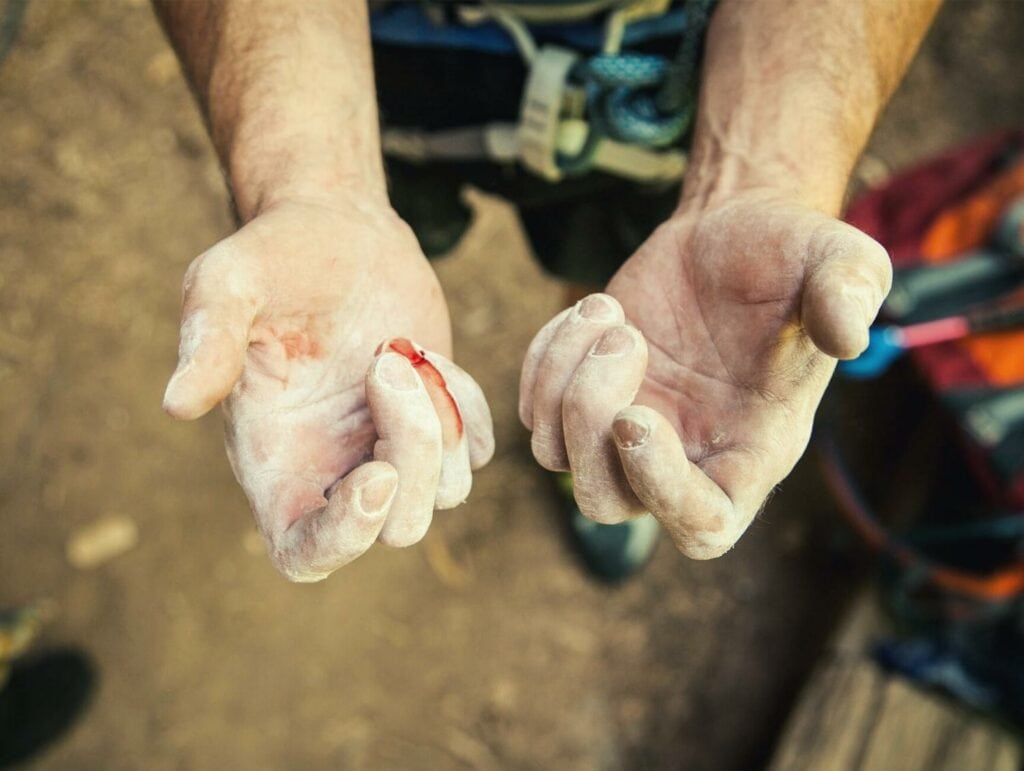
Grabbing onto rough surfaces consistently will start to take a toll on your hands. These are called ‘climbing hands,’ and they can be both a blessing and a curse. If given the right attention, climbing hands can become durable and resilient to damage.
If you don’t take proper care, you may find yourself often wrapping open cuts or enduring painful blisters at the end of your regular climbing session. Let’s look at some other ways that climbing can affect your skin.
1. Dry Skin & Loose Skin
Dry, cracked skin is an everyday reality for a rock climber. Although dry skin can make for easier grips on holds, it can also cause unwanted cracks and tears. Repeat use of chalk or other drying agents can quickly sap the natural oils from your hands. Maintaining a consistent amount of hydration is crucial to keeping the skin pliable and less prone to harm.
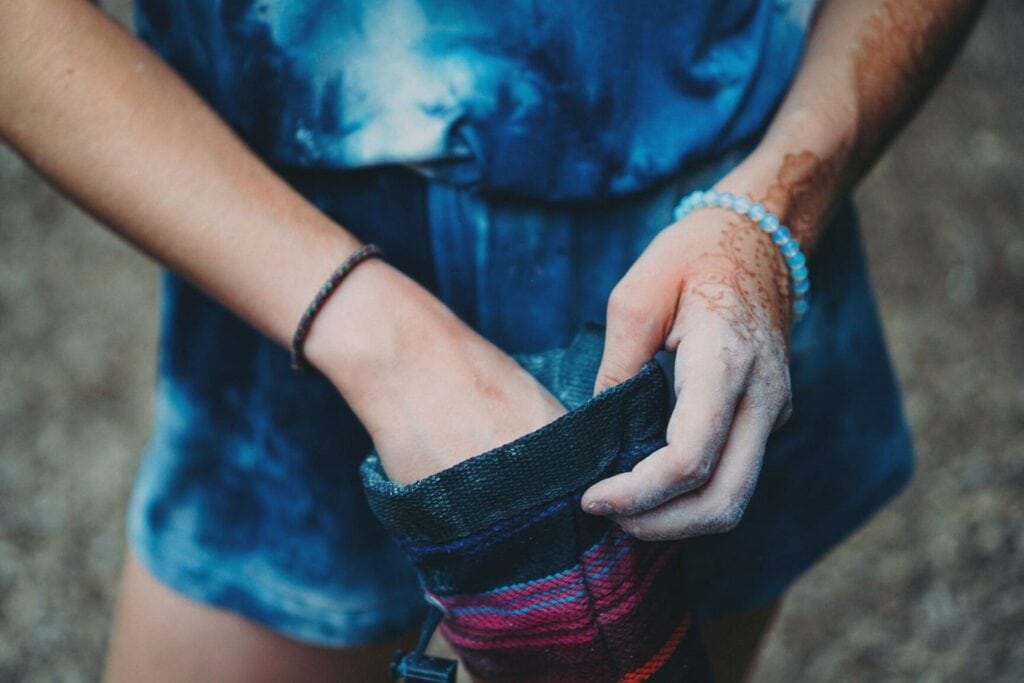
Loose skin can also be problematic. When sweat combines with repeated friction, a blister can form. This can cause the extra skin to catch on surfaces and then tear open, resulting in a flapper. Taking good care of the skin on your hands can help you avoid these unpleasant situations. As calluses build, you will become naturally less vulnerable to this issue.
2. Flapping Skin
Flappers are large, loose pieces of skin that have ripped away from the hand’s surface. Besides bleeding profusely when they occur, they are painful and leave sensitive tissue exposed, at risk for unwanted bacteria or even infection.
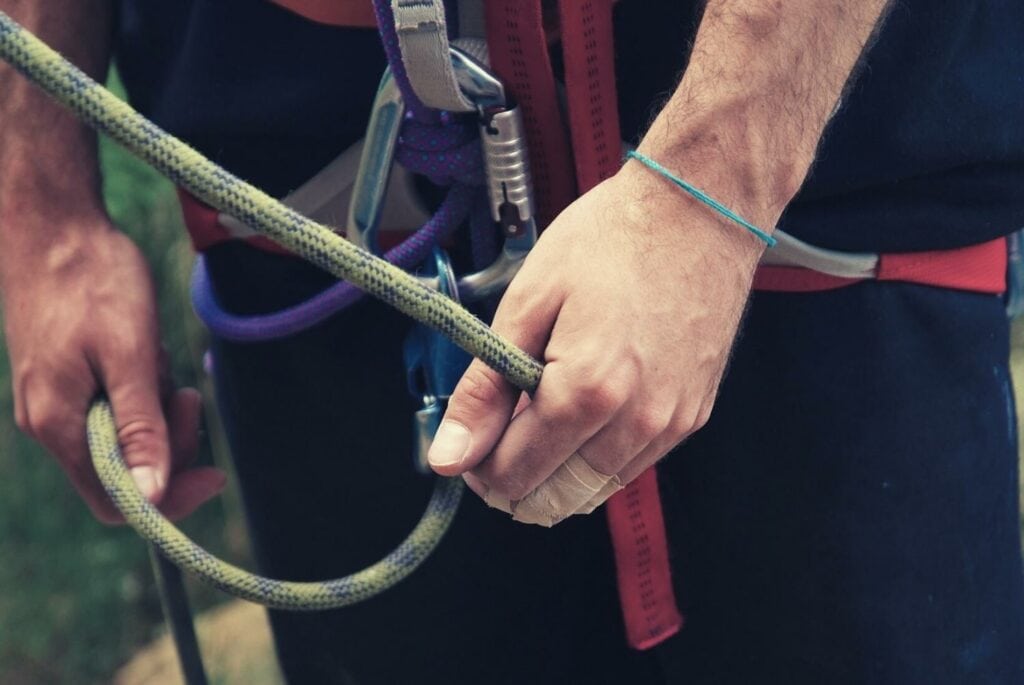
The best way to fix a flapper is by wrapping it well and allowing it proper time to mend. It’s better to prevent flappers than have to deal with them when they happen, believe me.
3. Good Climbing Hands
Having good climbing hands means gaining tough skin that is also pliant. This protects the hand’s sensitive tissue and can even help you get a better grasp of holds. Yes! In fact, good skin care can have a large impact on your abilities as a climber. Through taking some key steps, you can quickly and easily achieve durable climbing hands. Someone with well maintained hands will be ready to hop onto the next route as soon as they want.
Climbing Skin Care Tips
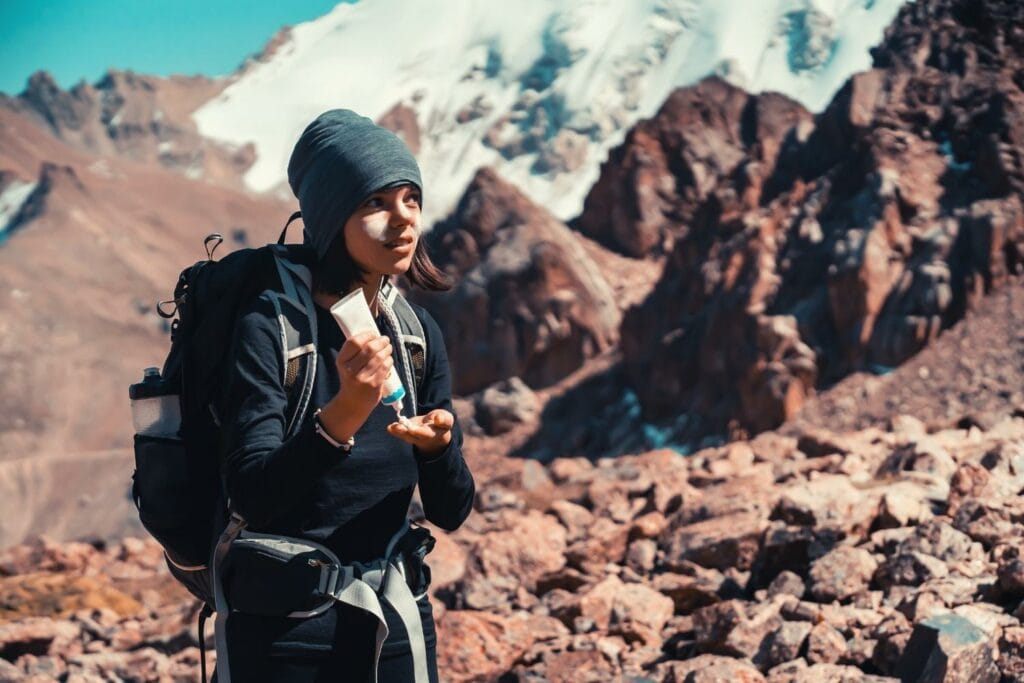
All skin responds differently to products and care because people have different skin types. These factors have to be taken into consideration when finding the skin care routine that works best for you.
Here are some tips to keep your skin healthy and clean no matter what type of skin you have.
Before Climbing
Wash and moisturize your hands often. Drink plenty of water so your skin will stay hydrated. Long nails can be prone to tearing and also make it harder to grip holds, so make sure to keep them short and carry nail clippers in case you need to adjust the length.
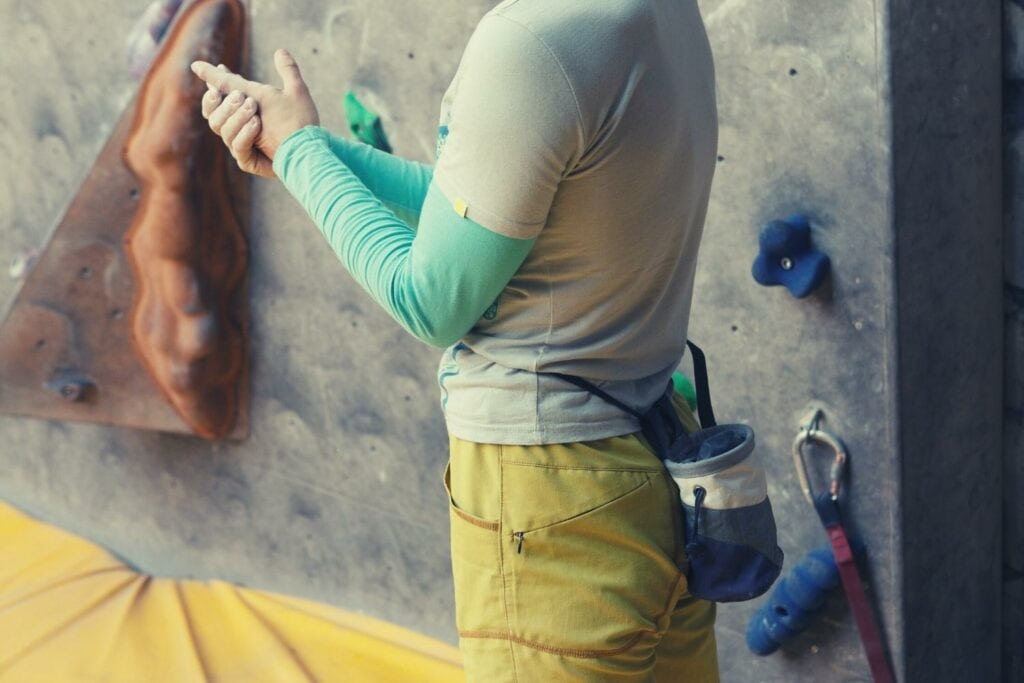
One to two hours before climbing, moisturize your hands, but avoid a wax-based cream as it can cause unwanted slipping. Climbing tape can also come in handy, especially on particularly sharp holds or rough rock. Tape your palms and fingers for added protection.
During Climbing
Using chalk is likely to dry out your hands. Keep an eye out for cracks, ridges, or tears. If they do appear, file them down using a nail file, pumice stone, or sandpaper file. When working with more delicate pieces, use clippers to cut away any dead skin. Do not use a nail clipper or pull the skin, as it can cause more damage.

If your skin starts to crack or bleed, stop climbing and immediately clean your hands to prevent infection. Make sure to apply antibiotic ointment then a band aid over the area and climbing tape over the top. If you do not have bandages or tape, it’s smarter to walk away and return once the wound has healed or you have the proper skin protection.
After Climbing
Be sure to check for any damage, cuts, or cracking post-climb. Once you’re done for the day, make sure to wash your hands and then apply salve. Clean hands are always important to keep bacteria at bay.
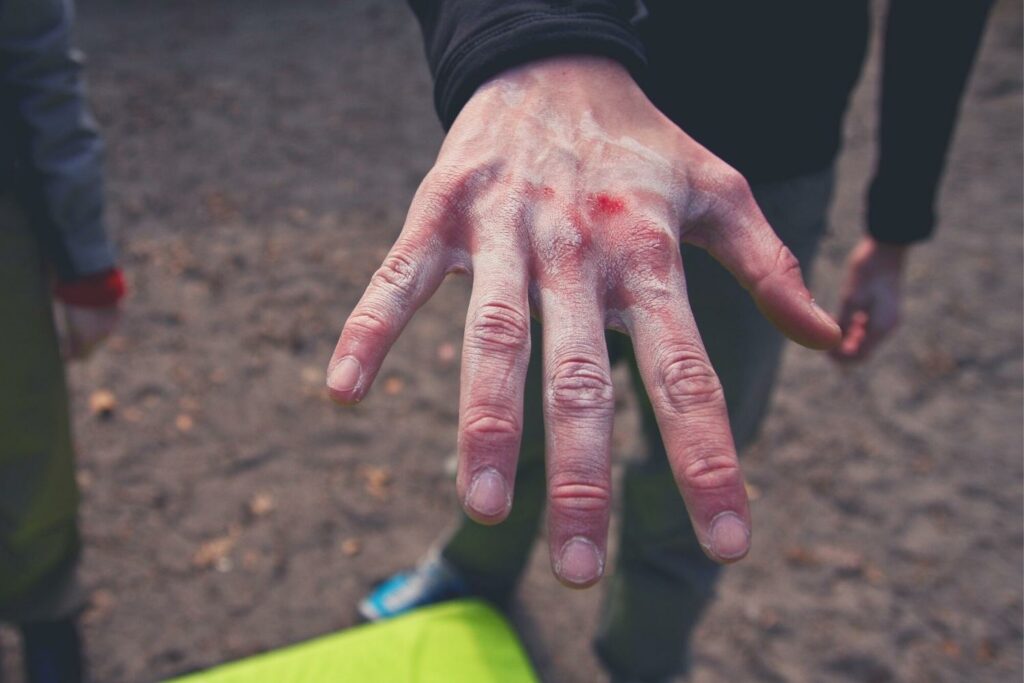
Carry a first aid kit, water, and soap on every trip and be sure to replace bandages often. The more responsible you are with your skin care before, during, and after climbing, the better.
Hand Salve or Hand Cream
Dry or brittle skin is more likely to crack and peel. Apply climbing salve or hand lotion at least once a day. Try out different brands and find the products that work best for you. Be aware that lotion is more likely to soften calluses, but salves can moisturize while maintaining them.
Minimize Time in Hot Water
You may be tempted to jump in a hot shower or bath within a few hours of a tough climb. Try to avoid lengthy exposure to hot water as keeping your hands wet for too long may cause calluses to peel off. Minimize time in the shower, keep your hands out of hot tubs, and wear rubber gloves when washing dishes to avoid wet hands.
Keep in mind that avoiding moisture is not always the answer. Your skin also needs time to heal and regenerate. Moisturizing regularly will allow for your hands to be nourished while you help build more durable and climber-friendly skin.
Product Recommendations
Climbing Balm or Salve
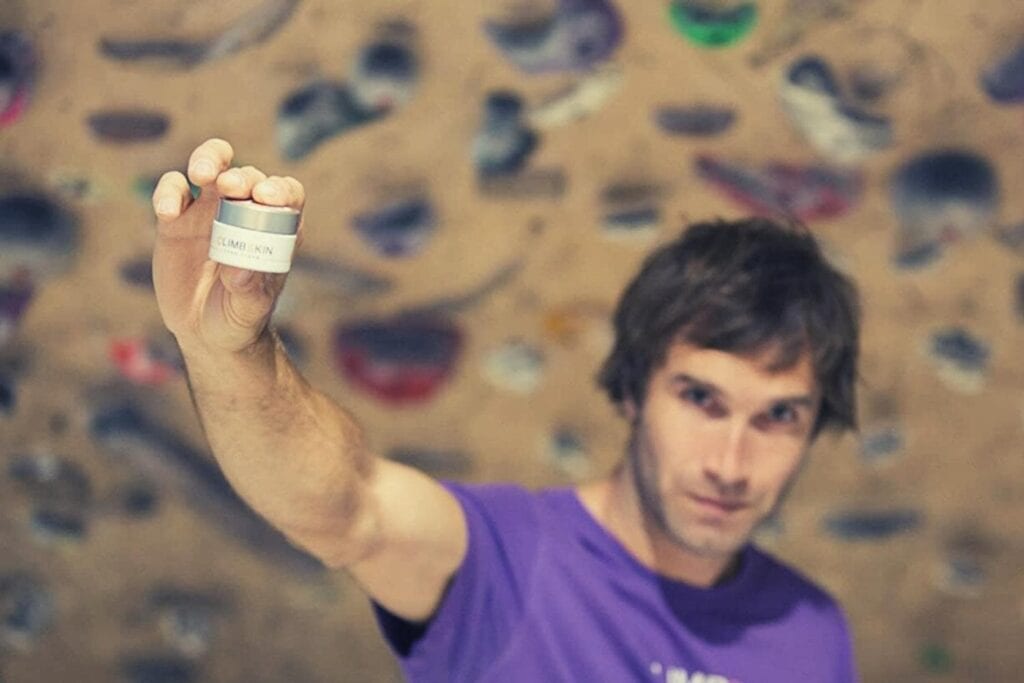
Climbskin Hand Cream provides great protection from splitting and even helps sweaty hands grip well. Apply 1-2 hours before activity. After a climb, wash your hands and apply additional product to keep your skin moisturized and ready to start climbing again.
Recovery Hand Cream
Use Joshua Tree Skin Care’s After Sport Recovery Lotion with Arnica to reduce inflammation and treat bruises, cuts, and sores. Arnica lotion helps heal and treat skin from the inside out.
Liquid Bandage
New Skin Liquid Bandage is an antiseptic and waterproof bandage for minor cuts and wounds. Apply it this flexible bandage to seal and heal. This is a great product for outdoor climbing or when a sink is not available for washing.
Skin File
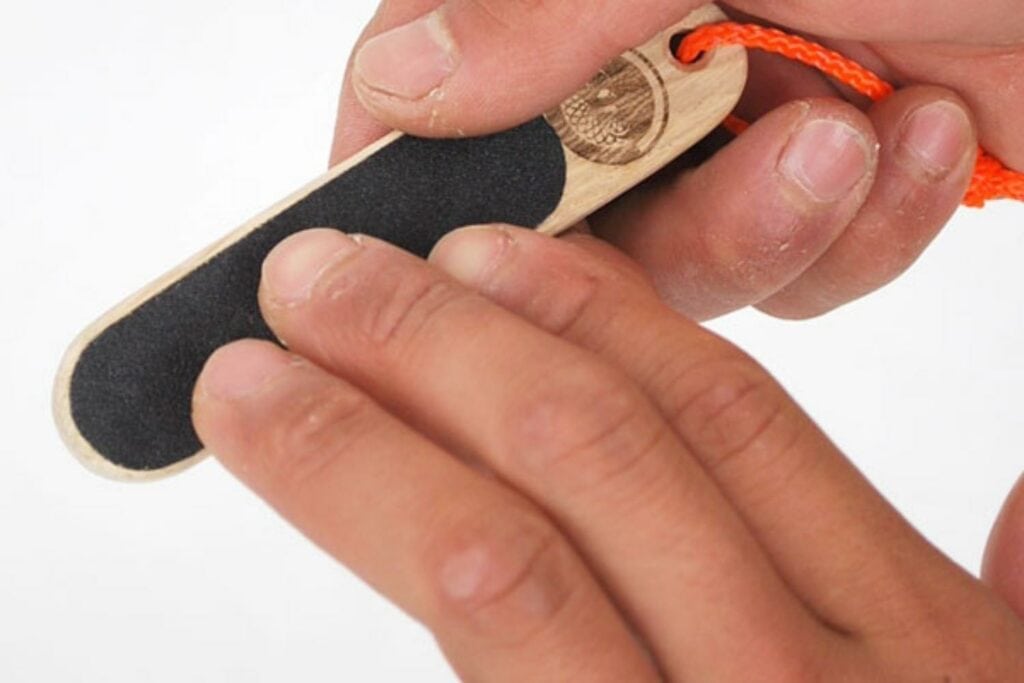
Climbskin has a double-sided skin file that is pocket-sized and perfect for sanding down any large calluses. It’s long-lasting and the curve accommodates for the shape of your fingers and hands. Throw it in your chalk bag and you’re ready to file at any time.
Liquid Chalk
Liquid chalk is very popular among avid climbers. Made with alcohol, liquid chalk has a drying agent to keep sweat at bay and get an overall even coat. Apply it to palms and finger pads. Some of the most popular liquid chalks are by Mammut, Black Diamond, or FrictionLabs.
Gloves

Whether climbing, belaying or rappelling, there are plenty of glove options. The Petzel Cordex are best for belaying and rappelling. The Black Diamond Crag Half-Finger gloves are a great option for those who want less finger coverage. The Black Diamond Transition gloves have full hand protection and are both comfortable and durable.
By following these tips, you can avoid letting pain, blisters, and cuts derail your training plans or keep you from a great climbing day.
Frequently Asked Questions
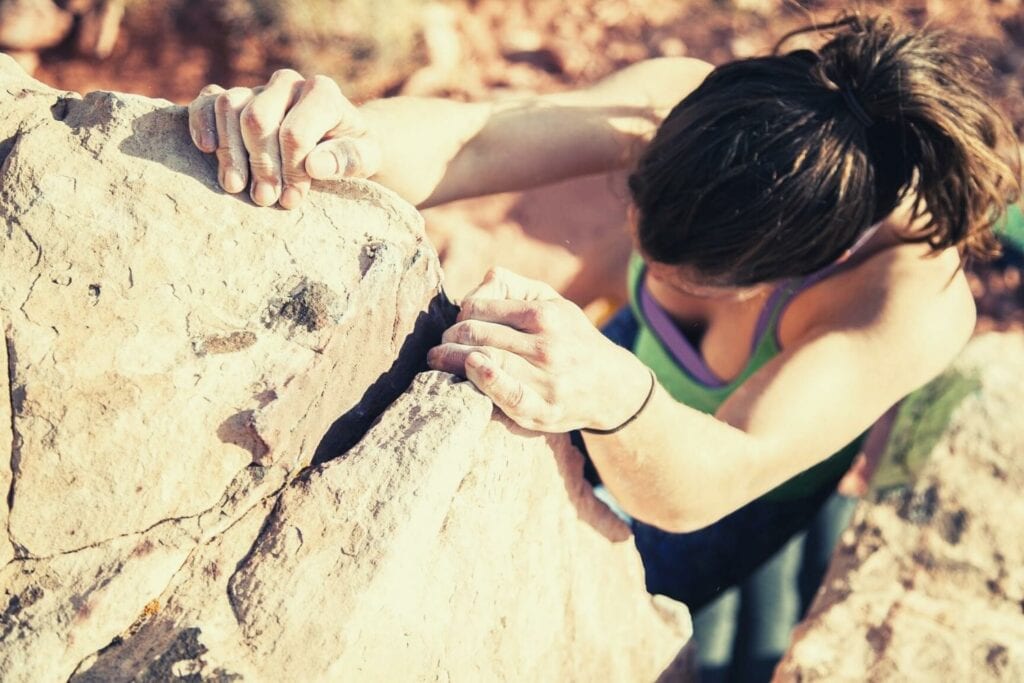
Climbing isn’t great for your hands, but the overall health of your hands will depend on the care you take before, during, and after activity. Tough and flexible, or “good skin,” for climbing, is possible.
Always! Moisturizing is the key to preventing flappers, cracks, splits, and tears. Rub on climbing salve or hand cream before bed to moisturize overnight. Salve will be more effective on your calluses as lotion or hand cream will tend to soften the calluses. Try out a few different options to see what works best for you.
To properly care for their skin, climbers use a variety of remedies. Some soak their hands in ice-cold water to care for tendons, muscles, and joints. Other climbers use creams with arnica oil on their fingers and finger joints. Arnica is known to help with bruising, sprains, wound healing, and muscle aches.
Climbing tape is commonly used to tape over blisters and protect calluses. Tape is often used when working on sharp rock and cracks or crevices.
To seal wounds quickly, climbers use liquid bandages or super glue to help keep out infection. Some even choose to wear gloves while belaying to protect from rope burns and damage to the skin.
Blisters are painful and uncomfortable but are common and usually heal within 7-10 days. A good overall rule is to leave the skin intact if possible.
If extremely painful, you can gently pop the blister with a sterilized needle, but do not tear it. The extra skin will act as a barrier to keep out bacteria and dirt. Wash the area and cover it with a bandage. Tape over the area to keep it clean and dry.
If you’re without a bandage, you can create a makeshift one by folding a piece of tape over onto itself. Place the folded section over the blister and secure it.
When you’re consistently climbing, certain areas on your fingers and hand may begin to build a callus. Calluses are great for climbing! The tough skin makes it easier to grip holds and is resistant to scrapes or cuts.
Your skin is constantly growing, so maintaining a callus involves a little bit of skill. Gently file down the thicker areas and use salve frequently. The goal is smooth, strong skin.
To prevent calluses, cracking, and blistering, it may help to wear gloves. You can find half-finger or full-coverage gloves at any outdoor gear shop. Gloves will also shield your skin if you have other injuries or need extra protection when belaying or rappelling. Using lotion to keep skin soft is another way to prevent calluses, although it may not be entirely successful.
Reference: WebMD
